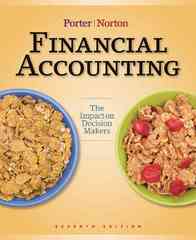Answered step by step
Verified Expert Solution
Question
1 Approved Answer
Financial planning can be more complex than the percentage of sales approach. Often, the assumptions behind the percentage of sales approach may be incorrect. For
Financial planning can be more complex than the percentage of sales approach. Often, the assumptions behind the percentage of sales approach may be incorrect. For example, if the amount of fixed assets increases, then depreciation will increase. A more sophisticated model allows these input variables to vary rather than being a strict percentage of sales.
This model used new borrowing as the plug variable by setting total liabilities and owners equity equal to total assets. Next, the ending amount of owners equity is calculated as the beginning amount plus the additions to retained earnings. The difference between these amounts is the total debt necessary to balance the balance sheet.
The main difference between this model and the percentage of sales approach is that we have separated out depreciation and interest. Depreciation is calculated as a percentage of beginning fixed assets, and the amount of interest depends on the amount of debt. However, since depreciation and interest now do not necessarily vary directly with sales, the profit margin is no longer constant.
The model parameters can be based on a percentage of sales model, or they can be determined by other means the company deems appropriate. For example, they might be based on average values for the last several years, industry standards, subjective estimates, or even company targets. Alternatively, sophisticated statistical techniques can be used to estimate them.
The parameter estimates used in this calculation of proforma financial statements are:
Cost percentage CostsSales
Depreciation rate Depreciation Beginning fixed assets
Interest rate Interest paid Total debt
Effective tax rate Taxes Taxable income
Payout ratio Dividends Net income
Capital intensity ratio Fixed assets Sales
The Lotus Company is preparing its pro forma financial statements for the next year using this model. The abbreviated financial statements are presented below.
Sales growth
Tax rate
Income Statement
Sales $
Costs
Depreciation
Interest
Taxable income $
Taxes
Net income $
Dividends $
Additions to
retained earnings $
Balance Sheet
Assets Liabilities and Equity
Current assets $ Total debt $
Net fixed assets $ Owners' equity $
Total assets $ Total debt and equity $
Note: Beginning Fixed Assets $
a Points Calculate the necessary ratios and parameters needed for financial planning in preparation for constrcuting the proforma balance sheet.
b Points Construct the proforma financial statements ie income statement and balance sheet using the parameters you calculated. Your proforma balance sheet should balance. What is the total debt necessary to balance the proforma balance sheet?
Step by Step Solution
There are 3 Steps involved in it
Step: 1

Get Instant Access to Expert-Tailored Solutions
See step-by-step solutions with expert insights and AI powered tools for academic success
Step: 2

Step: 3

Ace Your Homework with AI
Get the answers you need in no time with our AI-driven, step-by-step assistance
Get Started


